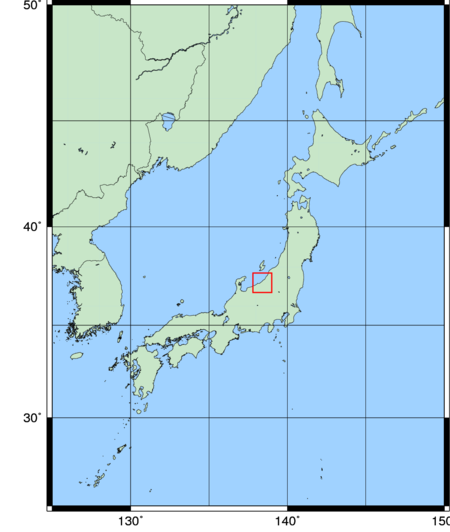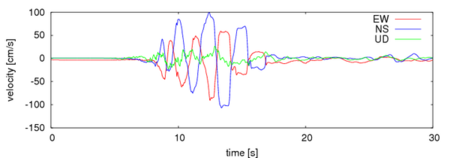Hiroyuki Goto (DPRI), Kimiyuki Asano (DPRI),
Takeshi Morii (Department of Architecture and Architectural Engineering),
Masumi Yamada (Pioneering Research Unit for Next Generation),
Masayuki Kuriyama (graduate student), Yayoi Ishii (graduate sturent)


| 2. Kashiwazaki (downtown) | |||
|
|
|
|
|
| About 15cm steps were observed at the approach of the bridge on R252. | |||
|
|
|
|
|
| Collupsed houses and the evidence of liquefaction were observed on R252. | |||
|
|
|
|
|
|
|
|
|
|
 |
|||
| Kashiwazaki Site observed 6+ JMA seismic intensity scale and over 100 cm/s peak velocity on NS component. A stone masonry and stone walls were collapsed. | |||
|
|
|
|
|
| The belfry jumped to the eastern side. The "belfry jumpings" were also observed during the Noto hanto earthquake and the Kobe earthquake. | |||
|
|
|
|
|
| The elevated walkway was damaged by the buckling at the fixed edge. | |||
| 3. Kariwa | |||
|
|
|
|
|
| Many steps on the road, gradient of the electric poles, and the evidence of liquefaction were observed on R8 and R116. | |||
|
|
|
|
|
|
|
|
|
|
| Kariwa site observed 6+ JMA seismic intensity scale. The windows of the office building were broken just over the instrument. | |||
| 4. Kashiwazaki (Nishiyama town) | |||
|
|
|
|
|
|
|
|
|
|
| Nishiyama site also obserbed 6+ JMA seismic intensity scale. The evidence of liquefaction was recognized in front of the office building. | |||
|
|
|
|
|
|
|
|
|
|
| Cracks over about 300m were observed at the walkway on R116. The walkway was constructed by about 2m height banks. | |||
|
|
|
|
|
| About 40cm steps were observed at the approach of the bridge on R116. | |||
| 5. Iizuna | |||
|
|
|
|
|
| Iizuna site also obserbed 6+ JMA seismic intensity scale, however the site is located over 50km far from the hypocenter. We did not observed stractural damages around the instrument. | |||
| 6. Acknowledgement | |||
| The report used the data provided by K-net, KiK-net, Hi-net and F-net, National Research Institute for Earth Science and Disaster Prevention. We thank many researchers for providing great information: Prof. Sawada (Kyoto Univ.), Prof. Iwata (Kyoto Univ.). | |||
| (Written by Hiroyuki Goto) | |||
|
Dynamics of Foundation Structure, Disaster Prevention Research Institute, Kyoto University |
|